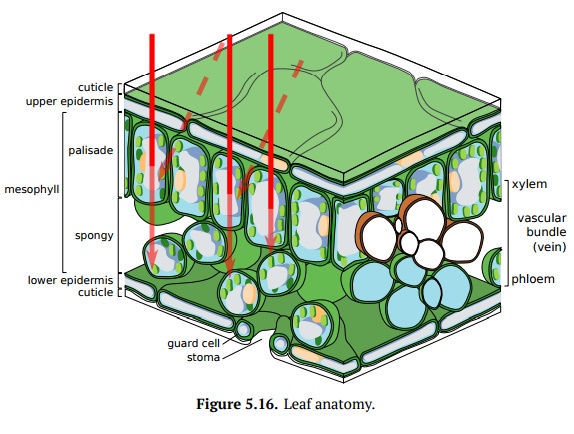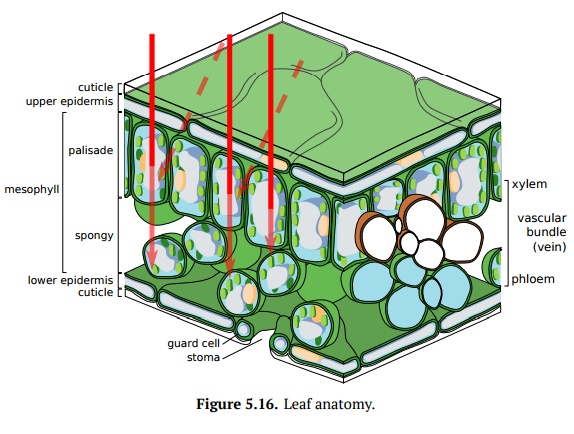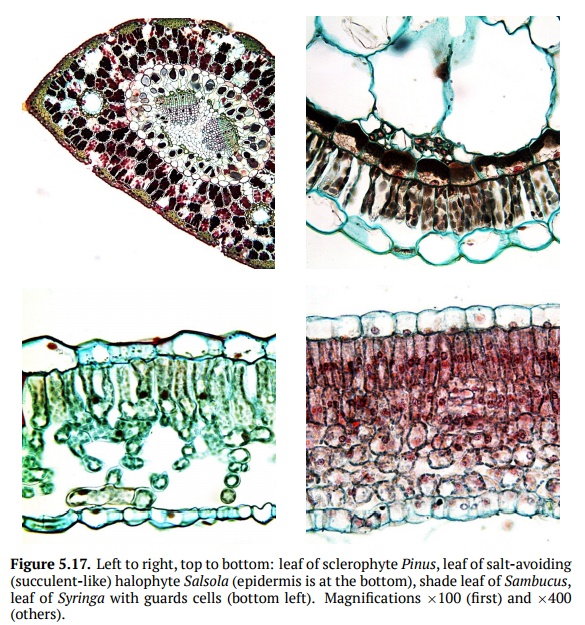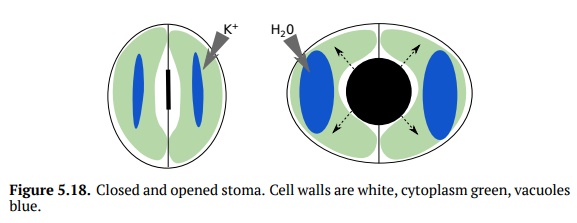Chapter: Introduction to Botany: Tissues and organs; How the Plant is built
Anatomy of the Leaf

Anatomy of the Leaf
Anatomically, leaves consist of epidermis with stomata, mesophyll (kind of pa-renchyma) and vascular bundles, or veins (Fig. 5.17). The mesophyll, in turn, has palisade and spongy variants. Palisade mesophyll is located in the upper layer and serves to decrease the intensity of sunlight for the spongy mesophyll, and also catches slanted sun rays. The palisade mesophyll consists of long, thin, tightly arranged cells with chloroplasts mostly along the sides. The spongymesophyll cells are roughly packed, they are rounded and have multiple chloro-plasts throughout (Fig. 5.16).

When a typical stem vascular bundle (which has xylem under phloem) enters the leaf, xylem usually faces upwards, whereas phloem faces downwards. Bundles of C4-plants have additional bundle sheath cells in their vascular bundles.
The epidermis includes typical epidermal cells, stomata surrounded with guard cells (also optionally with subsidiary cells), and trichomes. Almost all epidermal cells are covered with waterproof cuticle, rich of lignin and waxes.

The stomata assists in gas exchange, cooling and water transpiration. There are two guard cells paired together on each side of the stoma. These guard cells are kidney beans shaped and have a thicker cell wall in the middle. The thicker cell wall on the inside makes use of the so-called “bacon effect” (when bacon slice curved on the frying pan) because thinner part of the cell wall is more flexible and therefore bends easier. The same curving effect might be seen in blowing air balloon with the piece of scotch on one side. The opening of the stoma starts from K+ accumulation, then osmosis inflates guard cells, and finally the uneven cell wall facilitates the opening of stoma. The stoma closes when the potassium ions exit the cell and water amount decreases in its vacuoles (Fig 5.18).

In most cases, the lower epidermis contains more stomata than the upper epi-dermis because the bottom of the leaf is cooler and transpiration there is safer. A similar logic is applicable to trichomes (hairs): they are also more frequent on the lower side of the leaf.
Related Topics